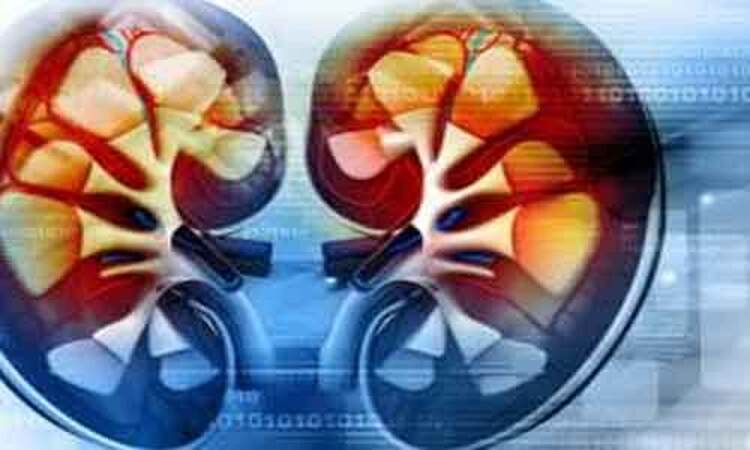- Home
- Medical news & Guidelines
- Anesthesiology
- Cardiology and CTVS
- Critical Care
- Dentistry
- Dermatology
- Diabetes and Endocrinology
- ENT
- Gastroenterology
- Medicine
- Nephrology
- Neurology
- Obstretics-Gynaecology
- Oncology
- Ophthalmology
- Orthopaedics
- Pediatrics-Neonatology
- Psychiatry
- Pulmonology
- Radiology
- Surgery
- Urology
- Laboratory Medicine
- Diet
- Nursing
- Paramedical
- Physiotherapy
- Health news
- Fact Check
- Bone Health Fact Check
- Brain Health Fact Check
- Cancer Related Fact Check
- Child Care Fact Check
- Dental and oral health fact check
- Diabetes and metabolic health fact check
- Diet and Nutrition Fact Check
- Eye and ENT Care Fact Check
- Fitness fact check
- Gut health fact check
- Heart health fact check
- Kidney health fact check
- Medical education fact check
- Men's health fact check
- Respiratory fact check
- Skin and hair care fact check
- Vaccine and Immunization fact check
- Women's health fact check
- AYUSH
- State News
- Andaman and Nicobar Islands
- Andhra Pradesh
- Arunachal Pradesh
- Assam
- Bihar
- Chandigarh
- Chattisgarh
- Dadra and Nagar Haveli
- Daman and Diu
- Delhi
- Goa
- Gujarat
- Haryana
- Himachal Pradesh
- Jammu & Kashmir
- Jharkhand
- Karnataka
- Kerala
- Ladakh
- Lakshadweep
- Madhya Pradesh
- Maharashtra
- Manipur
- Meghalaya
- Mizoram
- Nagaland
- Odisha
- Puducherry
- Punjab
- Rajasthan
- Sikkim
- Tamil Nadu
- Telangana
- Tripura
- Uttar Pradesh
- Uttrakhand
- West Bengal
- Medical Education
- Industry
Ursolic acid and empagliflozin combo better for treating diabetic nephropathy, study finds

China: A recent study in the journal Biomedicine & Pharmacotherapy has shown that a combination of ursolic acid (UA) and empagliflozin (EM) is more effective than the respective monotherapy for the treatment of diabetic nephropathy (DN). They do so by reducing oxidative stress, inflammation, and renal fibrosis, and by canceling each other's adverse effects.
Both the drugs cancel each other's adverse effects; Ursolic acid can reduce the side effects of empagliflozin LDL-L increase and urinary tract infection. Further, the combo treatment was shown to overcome the disadvantages of the slow hypoglycaemic effect of UA.
Previous studies have shown UA and empagliflozin to have therapeutic effects in the DN treatment, but both drugs have some disadvantages. The study by Xiaohan Wu, Zhengzhou University, Zhengzhou City, Henan Province, China, and colleagues, therefore, explores the effect of combining these drugs compared to that of either monotherapy.
For carrying out the study, Dr. Xiaohan, and the team established a diabetic rat model by feeding a high-fat diet (HFD) with high-sugar content and administering a low dose of streptozotocin (STZ) via intraperitoneal injection. UA (50 mg/kg/day, po), EM (10 mg/kg/day, po) or both were administered for 8 weeks. DN development was determined by observing increases in serum creatinine, urine protein, urea nitrogen, and uric acid and abnormal changes in kidney morphology.
Key findings include:
- UA and EM either alone or in combination alleviated the increases in blood glucose, glycosylated hemoglobin, blood lipid levels, inflammatory factors (TNF-α, IL-1β, IL-6), oxidation factors (SOD, MDA, GSH, CAT, NO), renal fibrosis, and pro-fibrosis factors (FN, E-cad, MMP-9, TIMP-1, SMA-α, TGF-β1, SMAD, MAPK).
- The treatments also ameliorated DN by preventing the abnormal proliferation of glomerular mesangial cells under high-glucose conditions, aberrant apoptosis, and excessive production of reactive oxygen species (ROS).
- UA reduced the increase in LDL-L, reverses abnormal bladder morphology, and mitigates the increase in colony count caused by EM, and the combination treatment overcame the disadvantages of the slow hypoglycaemic effect of UA.
The researchers concluded, "In short, the combination of UA with empagliflozin is more effective than either monotherapy in the treatment of DN and can cancel the adverse effects of each other. The protective effect of this regimen on the kidney may be related to reducing inflammation, oxidative stress, and renal fibrosis.
Reference:
The study titled, "The combination of ursolic acid and empagliflozin relieves diabetic nephropathy by reducing inflammation, oxidative stress and renal fibrosis," is published in the journal Biomedicine & Pharmacotherapy.
DOI: https://www.sciencedirect.com/science/article/pii/S0753332221010519
Dr Kamal Kant Kohli-MBBS, DTCD- a chest specialist with more than 30 years of practice and a flair for writing clinical articles, Dr Kamal Kant Kohli joined Medical Dialogues as a Chief Editor of Medical News. Besides writing articles, as an editor, he proofreads and verifies all the medical content published on Medical Dialogues including those coming from journals, studies,medical conferences,guidelines etc. Email: drkohli@medicaldialogues.in. Contact no. 011-43720751


